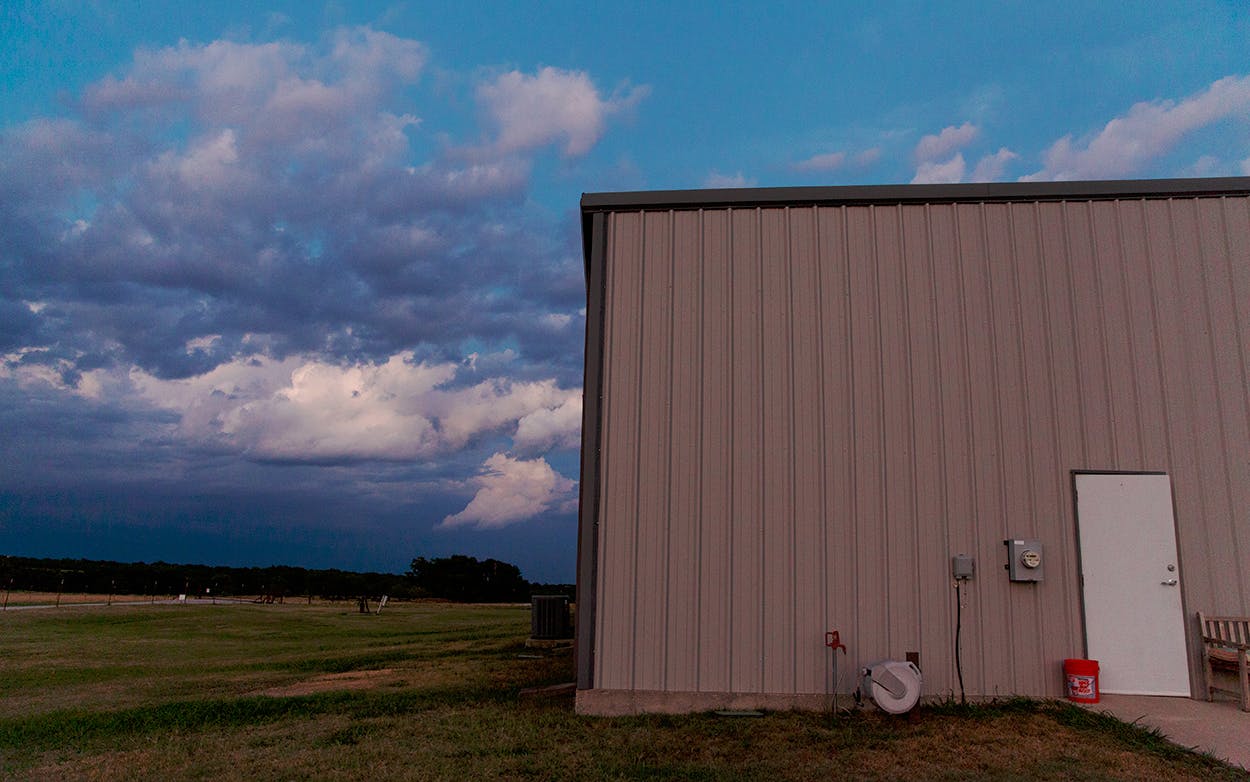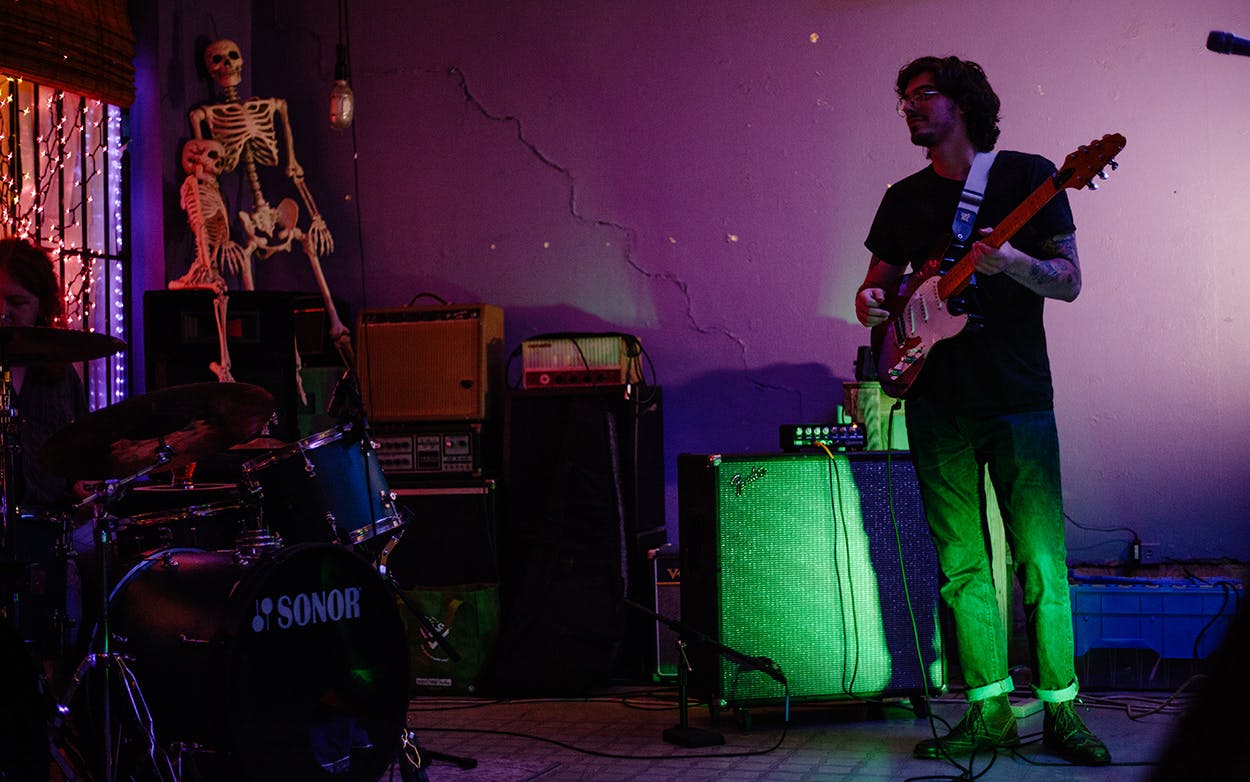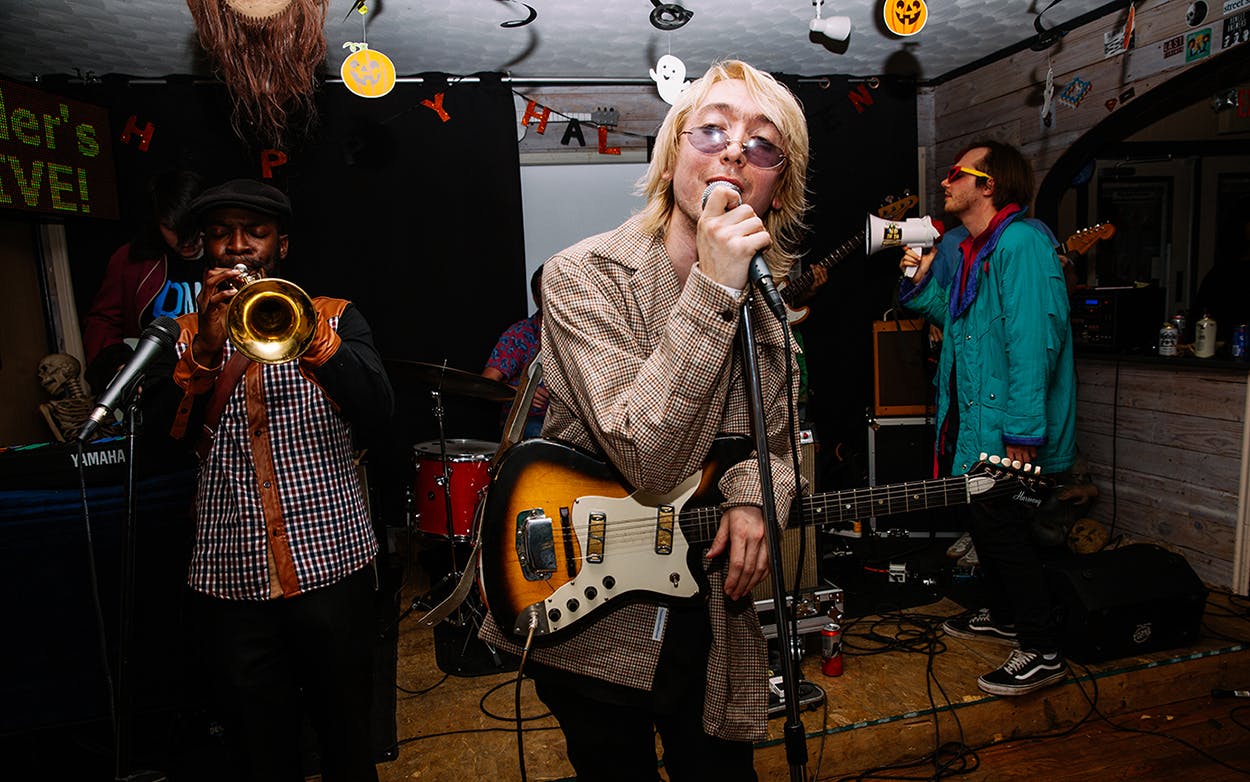If there is one thing that Jordan Richardson and his best friend Steve Steward can agree on, it’s that cultural scenes only last about five years. Tops. Okay, they agree on more than that, like forgoing all lyrics about rivers and “going home” for the allure of writing about an actual city experience (bring on Jason’s Deli and JoAnn Fabrics). Actually, alright, they agree about most everything, including the reason for our conversation in October: the state of Fort Worth’s scene, which is recalibrating after the departure of its biggest recent star, Leon Bridges.
“It’s just—the scene is different,” said Steve, a musician, in-the-know bartender, Fort Worth Weekly columnist, co-owner of the label Wizardvision, and part-owner of the studio where we were meeting, Electric Barryland, which is in the middle of a cow pasture just outside of Fort Worth. Though similar in mind, they are physically opposites: Jordan is tall, brown-haired, and clean-shaven, where Steve is shorter, blonde, and hairy. “When Leon [Bridges] was in his ascendancy, everybody was crawling out of the woodwork, like, ‘Hey, Leon, take me with you, I write songs,’ or ‘if you need a drummer, let me know,’” Steve said, leaning back onto a couch. “People thought that all was going to raise the profile of the city, but it hasn’t in the way that they thought it would.”
Jordan, Steve’s bandmate in Son of Stan, co-owner of Wizardvision, and studio co-owner, spun on a tall chair and nodded in agreement. Leon Bridges capped a thriving scene from about 2010 to 2015, formed by a warehouse and house shows, he explained. But when the Warehouse, an underground music venue, closed in 2015, Bridges and other bigger acts like Quaker City Night Hawks went on tour. The city has been trying to find its footing ever since. “The most interesting thing happening is that young people are forced out of the DIY scene—no more warehouse events,” Jordan said. “Younger bands are having to make themselves known and seen in a place that caters to more like a formal venue—real bars where craft beers are hand-written on a board. Like a place that would put an ad in the paper. A brunch sort of world.”
This has proved to be a hurdle. Regardless, Steve said, “I think the kids are discovering their own magic.” When a scene undergoes uncertain transitions, everyone has space to experiment.
So, what sounds were they hearing?
“Well,” Jordan said, “like this artist I just produced, Steve Gnash. He’s really influenced by Orange Juice and Prefab Sprout and this softer like adult-y kind of earlier eighties pop music, Joe Jackson and Roxy Music. When his band plays at shows they’re sort of like scuzzy skate punks, but they play really well.”

“It’s got a lot of jokes about the Southwest Kia dealership that fly over people’s heads,” Steve added.
“Yeah, right!” Jordan said. “A ton of inside jokes, then when they turn that off and stop doing the punk-rock ridicule, it’s like this wonderfully arranged music—that sometimes they’ll not even perform, they’ll just play the record and lip-synch to it.”
What else?
“The most interesting one is Max Keeble’s Big Groove,” a reference to a 2001 Disney movie with a similar name, said Steve. “They’re trying to make kind of like a jazz fusion funk band, which to me, that’s mind-blowing because nobody’s done that for kids born out of this punk music scene.”
“Right,” said Jordan.
“It’s like trying to clone a wooly mammoth,” Steve continued. “It’s like something that sounded weird to me when I was 22 and hadn’t been in any bands, you know, like Bertha Coolidge.”
Jordan thought of another band: Yaz Mean. “They’re young dudes and they’re calling their genre Diet Dad Fusion. So they’re like two guys from a punk band and they’ll grab a rhythm section that was in a jazz program and they’ll try to play like Mahavishnu Orchestra.”
The local music school influence was real, particularly with the biggest underground act happening in Fort Worth, Programme, which Jordan had described as a group of “exceptional musicians who don’t want to use their forces for good. Experimental progressive jazz stuff that comes off sounding like a training video for a plastics company in the eighties or a weird cop show.” They agreed that Programme was a key component to the scene, in part because the musicians are largely older and more established.
Like Programme, “the new groups are unafraid of doing weird stuff,” Steve said. “There’s a band called Desert Museum where the front man is, he’s 21, and seems to be kind of sad, so he paints his face with sad clown makeup and you know that’s—we wouldn’t have done that.”
Whatever is percolating in Fort Worth tends to showcase at Dreamy Life—a tiny record store within a volunteer library—or on one of the three podcasts in the city featuring local music, or on the pirate radio station out of the Fairmount neighborhood, an area that has gentrified so quickly that Jordan and Steve were sticking a fork in it. But bands can record, well, anywhere. Because of the musical success in the past decade, studios in this part of North Texas have opened for every genre and budget: Niles City Sound, Cloudland, Fort Worth Sound. “And I’m sure there are thirty, fifty, or a thousand country music studios,” Steve said.

“Yeah, right,” Jordan added. “That’s a whole other thing that we don’t even consider thinking about, but that’s probably actually driving a large part of the economy, musically.”
“Around 35 dudes with three names that play at the White Elephant or the Thirsty Armadillo,” said Steve.
They acknowledge that whatever breaks out nationally will probably come out of Niles City, though. Certainly their own tastes would not be helpful in creating a mainstream hit.
“We’re not going to make a Leon, I don’t think,” Steve said. “Yeah, I mean, if we did have a hit it would not have that vibe at all.”
“We’re making the next Tiny Tim,” Jordan said.
“Yeah!” Steve said.
“We hope to birth a novelty star. That would be insane.”
“If we could figure out how to make a second coming of Weird Al, that would be our bag for sure.”
- More About:
- Music








